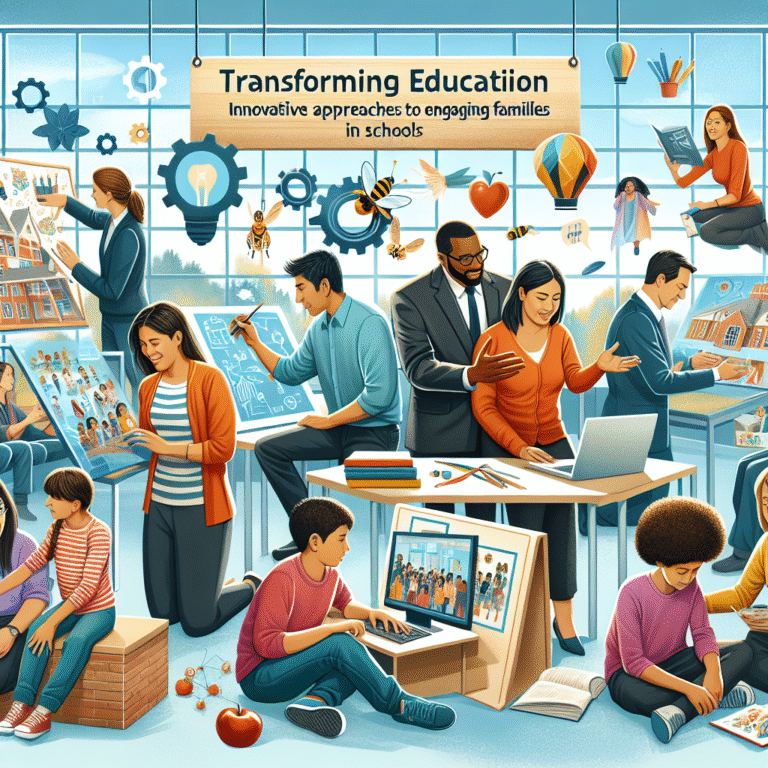
Introduction
In our ever-evolving world, understanding learning disabilities has never been more crucial. Millions of individuals across the globe navigate through life with hidden challenges that affect their learning processes. Whether diagnosed as dyslexia, ADHD, or other specific learning disabilities, the stigma surrounding these conditions often leads to misunderstandings, isolation, and a lack of support. We can create a more inclusive environment by diving deeper into the complexities of these disabilities and embracing neurodiversity. This article will explore breaking the stigma: understanding learning disabilities and embracing neurodiversity, revealing how society can better support those who think, learn, and perceive the world differently.
Understanding Learning Disabilities
What Are Learning Disabilities?
Learning disabilities (LDs) are neurological conditions that affect the brain’s ability to receive, process, or express information. They can manifest in various forms, including difficulties in reading (dyslexia), writing (dysgraphia), and arithmetic (dyscalculia). It is essential to recognize that having a learning disability does not reflect a person’s intelligence or potential. In fact, many individuals with learning disabilities are exceptionally bright in other areas.
The Science Behind Learning Disabilities
Research indicates that learning disabilities often stem from differences in brain development. For instance, individuals with dyslexia may process auditory information differently, making it challenging to decode language. A table below summarizes common learning disabilities and their characteristics:
| Learning Disability | Key Characteristics |
|---|---|
| Dyslexia | Difficulty reading and decoding |
| Dysgraphia | Challenges in writing and spelling |
| Dyscalculia | Difficulty with numbers and math |
| ADHD | Challenges with attention and focus |
| Auditory Processing | Difficulty understanding and processing spoken language |
The Stigma Surrounding Learning Disabilities
Root Causes of Stigma
Unfortunately, many people associate learning disabilities with inferiority or laziness. This misconception can lead to shame, anxiety, and reduced self-esteem for those who are affected. For instance, children with dyslexia may be labeled as "slow" or "careless," causing frustration and withdrawal from academic pursuits.
Impact of Stigma
Stigmatization can have severe ramifications. Studies show that students with learning disabilities often underperform in school due to lack of accommodations and support systems. Furthermore, when adults with learning disabilities enter the workforce, they may face discrimination, impacting their career growth and job satisfaction.
Real-World Example: The Story of Emma
Consider Emma, a bright and creative 12-year-old with dyslexia. Initially, she struggled with reading, which led to feelings of inadequacy. The stigma surrounding her disability made her reluctant to ask for help. After learning more about her condition and receiving support from her teachers and family, Emma not only improved her reading skills but also embraced her unique perspective and creativity. Her story exemplifies the importance of understanding and addressing learning disabilities, demonstrating the potential for overcoming stigma through awareness and support.
Embracing Neurodiversity
What is Neurodiversity?
Neurodiversity is a concept that celebrates the variety of human brains and the unique ways people think and learn. Rather than viewing neurological differences as deficits, neurodiversity promotes acceptance and understanding. It advocates for creating environments that respect different cognitive styles, rather than forcing everyone to conform to a "neurotypical" standard.
The Benefits of Embracing Neurodiversity
- Enhanced Creativity: A diverse set of cognitive skills can lead to innovative solutions and approaches.
- Improved Problem-Solving: Teams composed of neurodiverse individuals often perform better due to varied perspectives.
- Greater Empathy: Understanding diverse neurological conditions fosters compassion, leading to stronger communities.
Case Study: Company X’s Neurodiversity Employment Program
Company X, a tech firm, launched a neurodiversity employment initiative aimed at hiring individuals with learning disabilities and autism. By providing specialized training and a supportive work environment, Company X not only increased employee satisfaction but also experienced a boost in productivity. Their success demonstrates the tangible benefits of embracing neurodiversity within the workplace and challenges outdated assumptions surrounding disability.
Breaking the Stigma: Education and Awareness
Role of Education
Education plays a vital role in breaking the stigma surrounding learning disabilities. By integrating learning disability awareness into school curricula, students can better understand their peers’ challenges. Schools should promote a culture of support where students are encouraged to share their experiences without fear of judgment.
Advocacy and Support Organizations
Various organizations are dedicated to raising awareness and providing resources for individuals with learning disabilities. Organizations like the Learning Disabilities Association of America (LDA) and Understood.org offer toolkits for advocacy, educational resources, and community support. Tables like the one below show the types of resources available through these organizations:
| Organization | Resources Offered |
|---|---|
| Learning Disabilities Association of America (LDA) | Educational materials, advocacy guides, local support groups |
| Understood.org | Online learning tools, expert advice, community forums |
Creating Inclusive Environments
In the Classroom
Teachers can create more inclusive environments by:
- Offering diversified teaching methods: Incorporate visual aids, hands-on activities, and technology to cater to different learning styles.
- Fostering open communication: Encourage students to express their challenges and solutions in a judgment-free environment.
- Implementing flexible assessments: Allow for alternative forms of assessment, recognizing that traditional tests may not accurately reflect a student’s understanding.
In the Workplace
Employers can take meaningful steps towards inclusivity by:
- Providing training for managers: Educate employees on learning disabilities to foster understanding and empathy within teams.
- Designing job roles around strengths: Focus on an individual’s strengths rather than their challenges, creating roles that leverage unique skills.
- Implementing reasonable accommodations: Allow for flexible work hours, remote options, and quiet workspaces to help employees thrive.
Community Initiatives
Community initiatives focused on awareness and education can also contribute significantly to breaking the stigma. Organizing workshops, seminars, and informational campaigns can help demystify learning disabilities and promote acceptance and understanding.
Conclusion
Breaking the stigma: understanding learning disabilities and embracing neurodiversity is essential for fostering a more inclusive society. By increasing awareness, addressing misconceptions, and promoting a culture of empathy, we can empower individuals with learning disabilities to realize their potential. Together, we can create environments that celebrate neurodiversity, unlocking the unique contributions that each person brings to our communities.
Key Takeaway
Support and understanding can transform lives. Whether you are a teacher, employer, parent, or friend, take action today to advocate for those with learning disabilities. Share stories, educate yourself and others, and continually strive for a world that embraces all forms of diversity.
FAQs Section
1. What are common signs of learning disabilities?
Common signs include difficulty with reading, writing, math, understanding instructions, or maintaining attention.
2. How are learning disabilities diagnosed?
They are typically diagnosed through comprehensive evaluations conducted by psychologists or educational specialists. These evaluations assess a range of cognitive skills and academic performance.
3. Can learning disabilities be treated?
While learning disabilities cannot be "cured," various interventions, such as tutoring, specialized teaching strategies, and accommodations, can help individuals succeed.
4. How can I support a child with a learning disability?
Support can include advocating for necessary accommodations at school, encouraging open discussions about their challenges, and seeking additional educational resources or tutoring.
5. What is the importance of neurodiversity?
Neurodiversity emphasizes the value of different cognitive styles, fostering innovation, empathy, and inclusivity, ultimately benefiting individuals and society as a whole.
By shedding light on learning disabilities and embracing neurodiversity, we can create a brighter, more inclusive future for everyone.


















